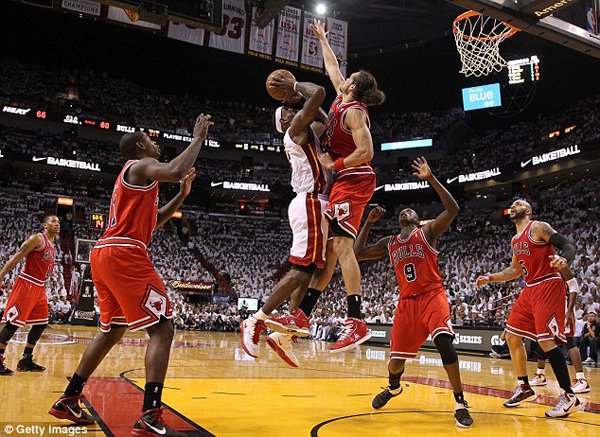Pinch Hitter and Pinch Runner
Question
-------------------------
Followup To
Question -
I'm wondering if there is certain criteria which must be met before using either a Pinch Runner or Pinch Hitter. For example, To use a Courtesy Runner, #1 it can only be used for a Pitcher or Catcher...#2 They can not have previously participated in the game in any capacity and ...#3 They cannot play in any other position for the same half inning they ran. WHY can't I find any restrictions at all for the P.H. or P.R?
Do you have any insight you wouldn't mind lending me? Thanks so much, Lonni
Answer -
In fastpitch softball a pinch runner or pinch hitter is simply a substitution. Being pinch hit for or pinch run for (with the exception of the courtesy runner) constitutes a substitution. At no time may a starter be in the line up at the same time as her substitute. So a starter or a substitute may be removed from the game and then re-enter ONCE. If a player re-enters the game a second time or a player re-enters the game in a different batting spot in the order, this is considered illegal re-entry and the player shall be considered as an illegal player and will be disqualified.
I'm still a bit confused Larry, if it is essentially a simple substitution, then why call it anything else? SO, for example, if I have #1 pinch hit for #2(a starter), Then I cannot sub #3 for #2 later in the game? I sure hope I'm making sense, I know I can be hard-headed, but I sure don't want to look stupid out there. Thank you SO much, Lonni
Answer
A pitch hitter and runner are not used in softball. However you may hear these terms used by other softball coaches or see these descriptions in a newspaper article about a softball game.
Basically these are baseball people that don't know any better, you won't find a PH or PR listed in the softball rule book. Just like you will not find a designated hitter (DH) in major fast pitch softball rule books (however high school rules may vary state to state).
In softball they use a designated player (DP).
The DP/FLEX rule has been adapted by many high schools. Starting Lineup
With DP/Flex, you have 10 starters, not 9. Both the DP and the Flex are starting players. The DP/Flex must be indicated on the starting lineup. Once the starting lineup has been given to the umpire, these positions cannot be added.
Batting Order / Substitutes
As with any lineup, a substitute bats where the player she replaced was batting.
DP/Flex are joined at the hip with respect to the batting order. If both players are in the game, the Flex has number 10 in the batting order (i.e. she does not bat). The only place in the batting order that either DP or the Flex can bat is the place the DP occupied at the beginning of the game.
In a normal substitution, one player leaves the game and one player enters the game. However, swapping the DP/Flex for each other is a "half substitution" - that is, only one member of the pair officially leaves the game or officially re-enters the game.
For example, if the DP comes in on defense for the Flex, the Flex has left the game (the lineup goes from 10 to 9 players). If the Flex re-enters on defense (which she can, 1 time), the DP returns to offense only and the lineup goes back to 10 players. This move has not affected the DP's starter / substitution / re-entry status in any way.
Let's take the reverse example: If the Flex comes in on offense for the DP, she is replacing the DP in the batting order (the lineup goes from 10 to 9). In this case, the DP is removed from the game, and the substitute re-entry rules apply to the DP. If the DP re-enters, she will re-assume her original position in the batting order, and the lineup will go from 9 to 10, and the DP will have used up her re-entry rights. The Flex will return to playing defense only. This move has not affected the Flex's starter / substitution / re-entry status in any way.
Either the DP or the Flex can be substituted for in the usual ways by other players, but the substitute takes on the position of the DP or Flex (depending on who she is substituting for).
Defensive Position Swaps Involving the DP and Flex
As with any lineup, defensive position swaps are not substitutions.
The DP starts at the defensive position of "F10"1 - benchwarmer. This means you can swap the DP with any player other than the Flex on defense and no one has left the game; it is not a substitution.
The player removed from defense continues to bat in her normal place in the batting order.
The Flex can be moved from her starting defensive position to any other defensive position (except for "F10" - benchwarmer), and she remains the Flex, and it is not a substitution.
Playing Shorthanded with DP/Flex
If you start with DP/Flex, while your starting lineup was 10 players, only the offensive lineup counts for the shorthanded rule. This means with DP/Flex you need 8 players offensively to continue the game, just as before.
The Power of the DP/Flex Rule2
The DP/Flex is a powerful tool in the hands of a coach who understands the rule.
Suppose a team has a hot glove - a true vacuum cleaner in the infield - but she can't hit a lick - a guaranteed out when she comes up to bat. Suppose a team has a player who is almost guaranteed to get on base one way or another, can steal second before the catcher can stand up, but struggles defensively. DP/Flex allows a team to turn this situation into an advantage instead of a disadvantage. They can use 10 weapons against the opposition's nine. They can use their 9 best fielders and bat their 9 best even if they aren't the same nine.
Most coaches understand this part of the DP/Flex rule since it is very similar to the DH rule from baseball. However, if this is all they use the DP/Flex rule for, they are missing it's most powerful possibilities.
Have you wanted to give your players a breather during those hot championship tournaments, but you don't want to burn your substitution possibilities too early in the game? The DP/Flex rule can allow you to do this.
Have you ever been late in game, and one of your players can't go on the field, but you have used all of your substitutes? The DP/Flex rule can allow you to continue with 9 on defense.
Here are some examples:
DP is batting for the pitcher (Flex).
1. It is a hot August day, with oppressive humidity. This is your third game of the afternoon, and your players are dragging. In the 2nd inning, your SS is struggling. So, you send the DP out to play SS. This is not a substitution, it is merely a defensive position swap.
The DP is now handling the defensive function of the SS and is handling the offensive function of the pitcher. Next inning, the SS is back & ready to take the field, but the LF now needs a breather. Now, the DP is going to play LF defensively - just like at SS the earlier inning. All this time, the DP is still the DP, the pitcher is still the pitcher, the SS is still the SS, and the LF is still the LF. There have been no lineup additions, no substitutions, just defensive position changes.
2. It is bottom of the 7th on a long tournament day, you are the visitors and have a one run lead. Your opposition is a power hitting team, and has been giving your outfield a workout all game with long outfield fly balls. Your CF cannot continue due to the heat. The top of their order is due up. You have used all of your substitutes.
Without the DP/Flex, you would be forced to try to hold back this team with 8 players on defense. You, however, understand the DP /Flex rule, and you send the DP in to play CF. Just like in example 1, this is not a substitution it is merely a defensive position swap. You can avoid having to try to finish the game shorthanded, with a huge gap in the outfield against this power-hitting team. And, if they do tie the game, you have not removed the center fielder from the game, so she has time to recover for her time at bat.
As you can see, the DP/Flex rule is perhaps the most powerful rule in the book for a coach who understands the possibilities. It is much more than just a complicated version of the DH rule in baseball. It is an extremely flexible weapon in championship games.
A type (or style?) of Bunting
sliding inside


